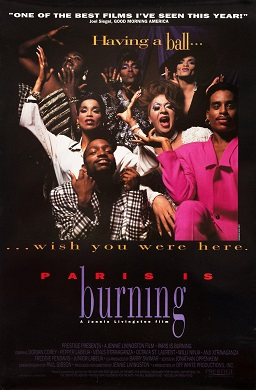The movies are haunting, disturbing, and beautiful. They're also hard to follow if Russian is not your native language — so I recommend you snag a copy of the synopsis before watching it. The opening scene of the trilogy, Zvenigora, is a hallucinatory, slow-motion shot of men on horseback moving across the screen. Perhaps today it is not a significant effect that a filmmaker would use slow-motion — it is easy enough to do on an iPhone! But seeing it on the silver screen — and in such a glorious presentation — I fell in love with cinema's basic ability to simulate motion. Movies simulate motion by projecting a series of individual images on the screen at a rapid rate. If you take a look at a movie reel you can see each individual frame. Each frame is essentially a photographic image. Now, of course, movies made today, for the most part, are filmed on digital cameras so looking at a movie reel is not possible — but the idea is similar. Thousands of images strung together in a line. Each one is slightly different from the next. Have you ever played with a flipbook — that is what it is like. Most movies are intended to make you forget that what you are seeing on the screen is a series of spliced together individual photographs. But Alexander Dovzhenko's movies, particularly his Ukraine Trilogy, made me aware of the cinema as a series of individual photos. Dovzhenko was a Soviet filmmaker. He made Zvenigora in 1928 — and on the surface, it tells a story about the relationship between Ukraine and Russia, and between technology and nature, superstition and belief, protest and allegiance, father and son. It's a propaganda film. But Dovzhenko was able to use those limitations to make something really incredible. I am not going to dwell too much on the narrative aspects of the film; rather, I want to focus on one aspect of the movie that struck me. The movie has a series of long shots that feature figures of people. Not exactly close-ups but more like photographs — but in a movie.

Creating the On-Screen Cinematic Portrait
Not all of the movies' shots are slow and extended — actually, the movie combines lots of different cinematic effects, close editing, shots looking up at a person from below, to give the effect of being dominated — images layered on another to create dream sequences and quite a few action shots.
Also, the movie plays with parallel images — a mother beating her son contrasted with scenes from war. And there are quite a few close-ups — in one sequence a man is gassed, reminiscent of the trench warfare that plagued the first World War (which is the movie's thematic launching point). For several takes, we see his garish expression, his horror, and his elongated response to the visceral horror of biological warfare. Dovzhenko’s faces reminded me of Carl Dreyer's faces of Joan in the movie The Passion of Joan of Arc — but not as intense a close-up. What I call portraits shots in the Ukraine Trilogy last about five to six seconds — so they are long enough to notice the figure in the frame. And in these shots the figures do not move much, but rather, they stand as if posing for a portrait. I don't think I have ever seen a movie capture portraiture in a moving image quite as Dovzhenko does in Zvenigora.
Nor has a movie made me stop and reflect on the photographic nature of cinema — especially in its early days. By definition, a portrait is a still image. Portraits were done by painters, often of important people, or commissioned by patrons — such as the portraits one can see in a place like The National Portrait Gallery in Washington, D.C. Or if you were to look through a family's photo album. The characters in Dovshenko's movie are portraits of peasants. They are portraits of soldiers. Of villagers. Of the proletariat. Of a mother and child. Of father and son. I am not sure how Dvoshenko arranged for his casting; but, I would not be surprised if he just took people off the street and filmed them — the movie, despite its flights of fantastic fantasy - has an air of the documentary to it. As if I were perusing the photographs of an anthropologist's field study. The figures in the film are costumed in folk dress; often mustached or bearded, for the men, and dressed in traditional thick woven garments for the women. Some of the facial expressions are exaggerated — for effect. The horror of war. The anger and jeer of a crowd. A startled glance. A loving look. A man without a nose. It's all there. But the more striking portraits are the ones of just looking on, of reflection. I imagine in the age of the GIF I could take any one of Dvoshenko's portraits, pluck it out of the film and make a five-second animated photograph. Or, I could pluck out some of the portraits (in the few I selected for this post one can hopefully see what I mean).











